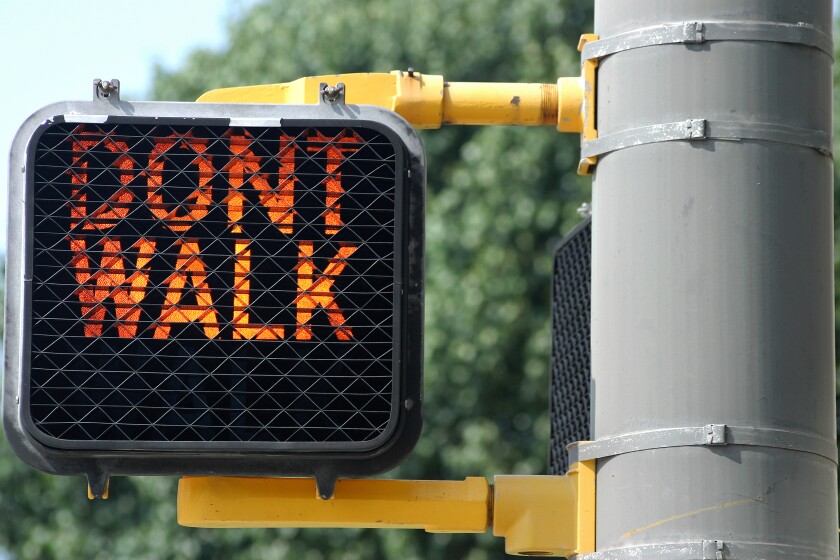In Brief:
More than 7,500 pedestrians were killed by drivers last year, the highest number in more than 40 years, according to a new report from the Governors Highway Safety Association (GHSA).
The report, which is based on data reported by 49 states and the District of Columbia, highlights a troubling trend in the U.S., which is almost unique among developed nations. Pedestrian deaths are increasing more quickly than other types of traffic fatalities, according to the report: Pedestrian deaths have increased 77 percent since 2010 while other traffic deaths have increased 25 percent.
The 7,508 pedestrian deaths around the U.S. in 2022 represent a 1 percent increase over the previous year. But despite the overall increase in deaths, most states actually saw pedestrian deaths decrease. Increases were clustered in Arizona, Virginia and Oregon, which together saw an average 33 percent rise in pedestrian deaths over the previous year. In raw numbers, the most populous states had the most pedestrian deaths, with California, Texas and Florida accounting for a combined 2,758 deaths. The overall number of deaths is the highest it’s been since 1981, according to the report.
“It’s a problem that’s persisting and seems to be getting worse,” says Russ Martin, senior director of policy and government relations at the Governors Highway Safety Association.
The GHSA is a group made up of state highway safety officials, which use federal funding to “implement behavioral highway safety programs that address the choices that all road users make,” the report says. But the causes of the increase in traffic violence go beyond the choices of roadway users. Martin says rising pedestrian deaths can be partly attributed to increases in “unwise and dangerous driving behavior” which spiked during the pandemic and has continued since, along with a trend in larger and heavier cars from American car manufacturers, and fundamental flaws in the design of highways and roads.
“We have inadequate infrastructure that’s really designed to prioritize the fast movement of vehicles and not to protect everyone on the roadway,” Martin says.
The report confirms existing research showing upticks in traffic fatalities, disparities in where the most deaths occur and which communities they affect the most. A 2022 report from Smart Growth America, Dangerous By Design, found that the top 20 most dangerous metropolitan areas for pedestrians were all in the southern half of the U.S. The same report found that pedestrians are killed at much higher rates in low-income census tracts than higher-income ones.
The changing demographics of American suburbs, which are designed around automobile infrastructure, could partly explain the increase in pedestrian deaths as well, as Angie Schmitt, author of Right of Way: Race, Class, and the Silent Epidemic of Pedestrian Deaths in America, toldGoverning in 2021. As poverty is increasingly suburbanized, more people without access to cars are living in those areas. “There are more lower-income people in locations that really weren’t designed with pedestrian safety in mind at all,” Schmitt said.
To address the rising tide of pedestrian deaths, the GHSA promotes a “Safe System approach.” That’s a framework that “accepts that humans will make mistakes, and so we should plan our transportation network to minimize those mistakes and their impact,” T. Bella Dinh-Zarr, a former vice chairman of the National Transportation Safety Board, wrote forGoverning in 2021.
Highway safety officials have traditionally focused on the threat of enforcement to compel people to make safe choices on the roads, says Martin. More and more, they’re appealing to a sense of shared responsibility to encourage people to make those choices. But there’s lots of tough work to be done to make the roads themselves less conducive to destructive behavior.
“This problem is not going to go away on its own,” Martin says.
Related Articles













